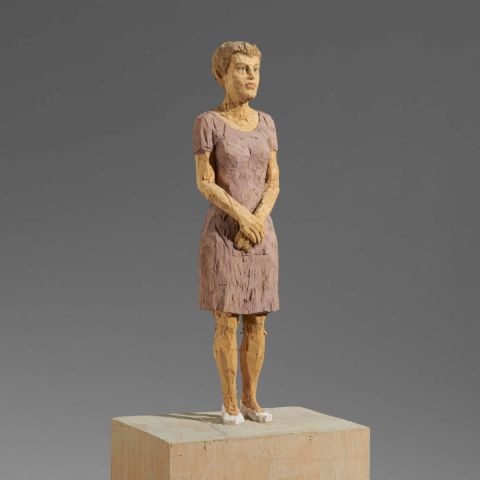
Lot 62 | Jesús Rafael Soto | "Double Blanc"
1923 Ciudad Bolivar/Venezuela - 2005 Paris
Title: "Double Blanc".
Date: 1967.
Technique: Oil on canvas with metal mobile construction.
Measurement: 158 x 158cm.
Notation: Titled, signed and dated verso upper right: "DOUBLE BLANC" Soto 1967. Additionally with direction indication.
Provenance:
- Galerie Denise René, Paris (adhesive label)
- Galerie Buchholz, Munich (Cologne art market)
- Private collection, Cologne (acquired from the previous owner in 1970)
- Works of this size are rarely offered on the German auction market
- Soto's fascinating works achieve a fourth dimension: the optical expansion of the image through movement
- Sold at Galerie Denise René in Paris - the epicenter of kinetic art at the time
- Museum-quality work - offered on the market for the first time in over 50 years
"If a work of art has an origin, it lies solely in the reflection, rigour, and logic of artistic inquiry. Art is not expression; art is knowledge." (Jesús Rafael Soto, quoted in Joray, Marcel / Soto, Jesús Rafael: SOTO, Neuchâtel, 1984).
A Venezuelan conquers the world of optics
Jesús Rafael Soto, the eldest of five children in a modest Venezuelan family, earned his first money as a teenager by painting letters on cinema posters. His artistic talent did not go unnoticed; in 1942, he was awarded a scholarship to attend the School of Fine and Applied Arts in Caracas. In 1950, however, the young art teacher left for Paris, where he intensively studied the works of the constructivists Kazimir Malevich and Piet Mondrian. Among the artists of the “Salon des Réalités Nouvelles” and the Galerie Denis René, such as Yaacov Agam and Victor Vaserely, Jesús Rafael Soto found fellow seekers of new optical forms of design using scientific knowledge. Initially, he painted repetitive, serial paintings, but soon added the third dimension: he set his paintings in motion using transparent Plexiglas panels. In 1955, Soto participated in the “Le Mouvement” exhibition at the Galerie Denis René, which was decisive for the development of kinetic art. In 1957, he created his first vibration paintings, in which he placed wire structures in front of a black-and-white striped background in such a way that even the slightest movement by the viewer created a moiré effect. Jesús Rafael Soto varied this concept with different elements such as square surfaces, T-shaped metals, and curved rods suspended from nylon cords. Closely spaced rods become essential on a completely different scale for the large-scale works that the now internationally acclaimed artist creates from 1967 onwards. He now invites the viewer to entrust themselves to his art and walk through the hanging rods. Jesús Rafael Soto has received great acclaim for his work; as one of the most important developers of Op Art, he is prominently represented in public spaces as well as in major collections and museums worldwide.
The dance of lines
“Double Blanc” from 1967 is a very characteristic vibration work by the Venezuelan artist. The square work is divided into three equally wide, tall rectangular panels. The two outer panels each feature a square formed by horizontal black and white hatching in the lower third. Long, thin, slightly curved metal rods float in front of these squares, held in place by nylon cords. The wires are dimensioned so that they extend far beyond their respective panels on both sides, but do not touch in the middle. A breath of air causes the feather-light construction to swing and dance. The superimposition of the lines in front of the hatched squares creates moiré effects even without movement. When the movement of the wires and the movement of the viewer are added, the lower third of “Double Blanc” begins to vibrate spherically. Fortunately, the upper two thirds, with their white tranquility and the austere vertical lines of the nylon suspension, provide a counterbalance to the oscillating dance of the lines.
Recognizably unique
With his vibration works, Jesús Rafael Soto has made a decisive contribution to Op Art and created a vast field of experimentation for himself. For even though he repeatedly uses the same principle of suspended rods in similar proportions, the diversity of the objects is surprising, yet clearly recognizable.
Some of these works feature only two panels with a single “mobile.” A change in the color scheme of the works also has a lasting effect on their expression.
“Double Blanc” captivates with its elegance and strict symmetry, while a very peculiar energy seems to charge the charming space between the wires.
Alexandra Bresges-Jung
Print this lot | Recommend lot |
Conditions of this Lot
32% buyer’s premium on the hammer price
Estimated shipping costs for this lot:
Arrangement after the auction.
Jesús Rafael Soto OP Art Kinetic Art Post War 1960s Abstract Painting Mixed media




